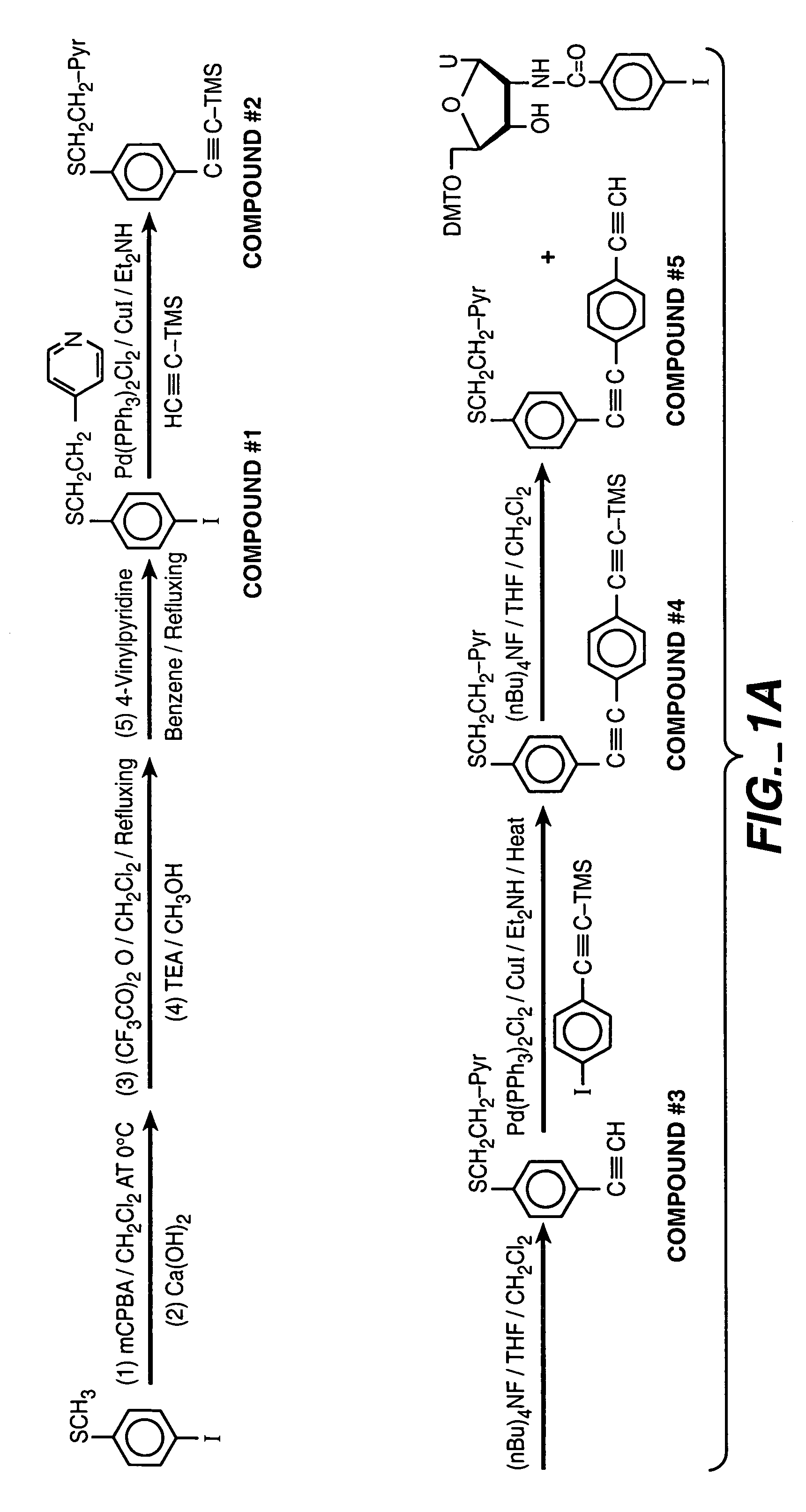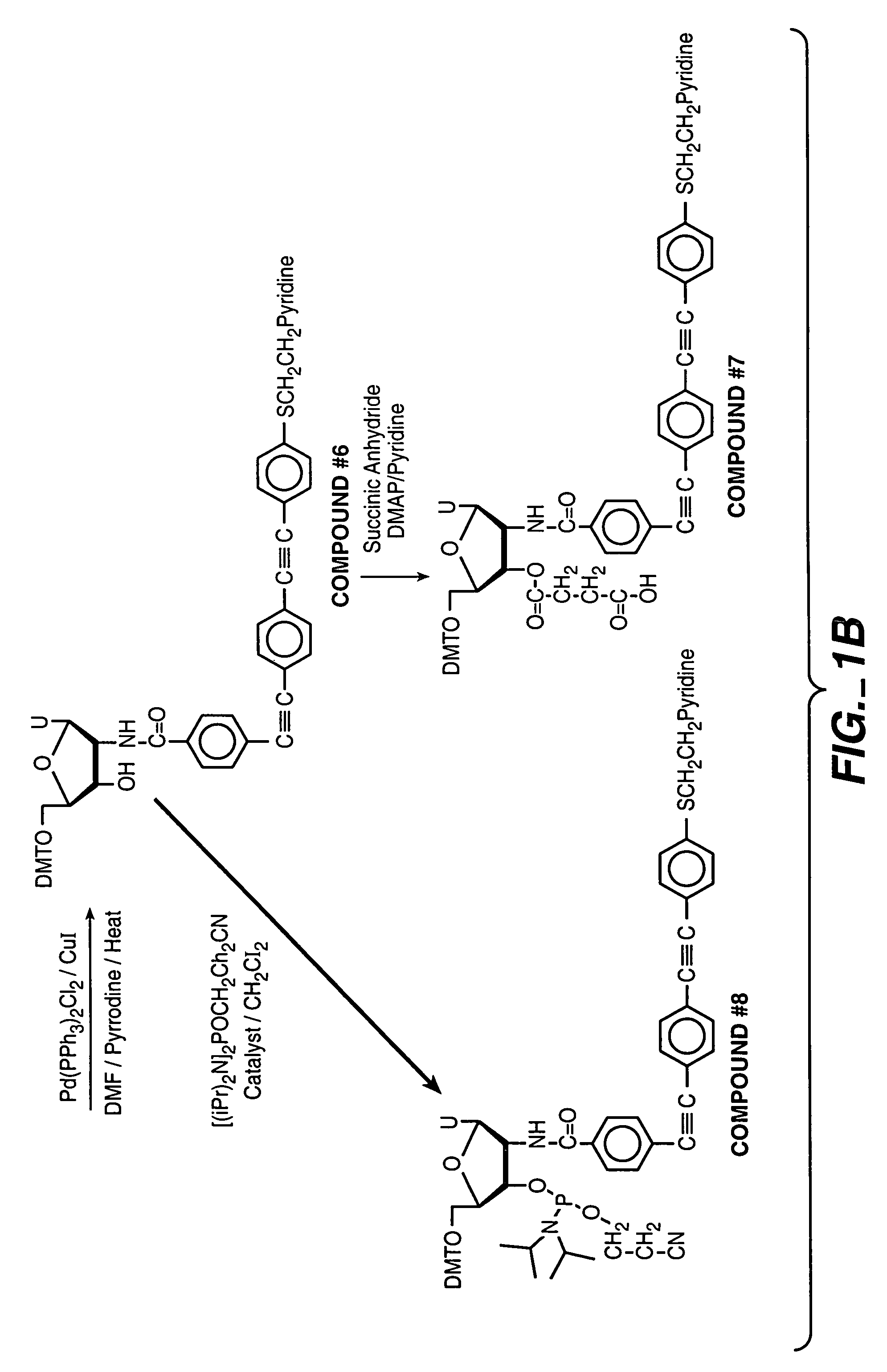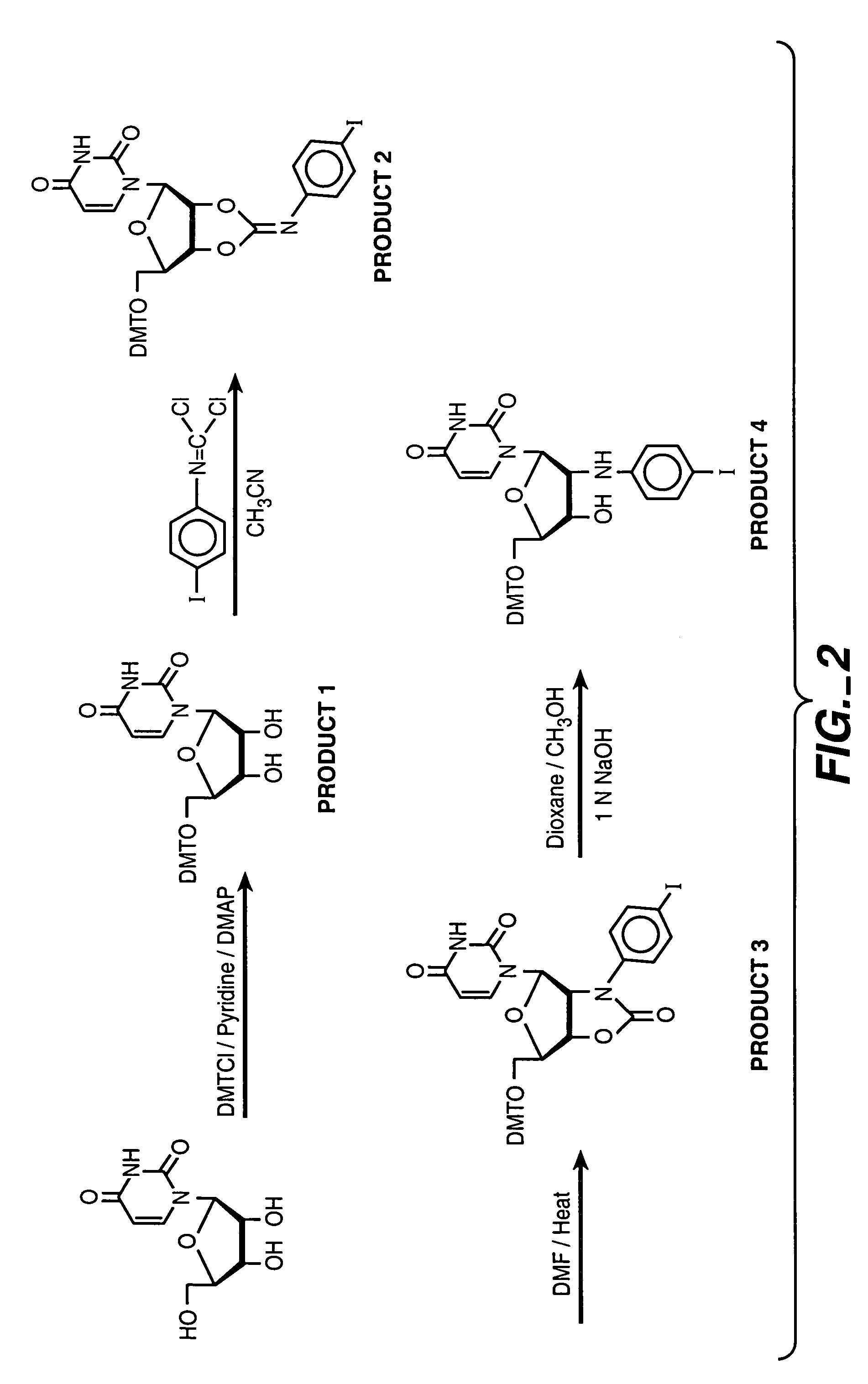Electronic transfer moieties attached to peptide nucleic acids
a technology of electron transfer moieties and peptides, applied in the field of nucleic acids, can solve the problems of specificity, general difficulty, and inability to achieve specificity, and achieve the effect of improving the accuracy and reproducibility of gene probe assays, and improving the accuracy of the assay
- Summary
- Abstract
- Description
- Claims
- Application Information
AI Technical Summary
Benefits of technology
Problems solved by technology
Method used
Image
Examples
example 1
Synthesis of Conductive Oligomer Linked Via an Amide to a Nucleoside
[0381]This synthesis is depicted in FIG. 1, using uridine as the nucleoside and a Structure 4 phenyl-acetylene conductive oligomer.
[0382]Compound # 1: To a solution of 10.0 gm (40 mmol) of 4-iodothioanisole in 350 mL of dichloromethane cooled in an ice-water bath was added 10.1 gm of mCPBA. The reaction mixture was stirred for half hour and the suspension was formed. To the suspension was added 4.0 gm of powered Ca(OH)2, the mixture was stirred at room temperature for 15 min and filtered off and the solid was washed once with 30 mL of dichloromethane. To the combined filtrate was added 12 mL of trifluoroacetic anhydride and the reaction mixture was refluxed for 1.5 h under Argon. After removing the solvents, the residue was dissolved in 200 mL of a mixture of TEA and methanol (ratio=50:50) and concentrated to dryness. The residue was dissolved in 100 mL of dichloromethane and the solution was washed once with 60 mL ...
example 2
Synthesis of Conductive Oligomers Linked to the Ribose of a Nucleoside Via an Amine Linkage
example 2a
[0393]Synthesis of 2′-(4-iodophenyl)amino-2′-deoxy-5′-O-DMT-uridine (Product 4): This synthesis is depicted in FIG. 2, and reference is made to the labelling of the products on the figure. To a solution of 5.0 gm of 5′-O-DMT-uridine (Product 1) and 2.7 gm of dimethylaminopyridine in 200 mL of acetonitrile was added 3.3 gm of p-iodophenyl isocyalide dichloride portion by portion under Argon. The reaction mixture was stirred overnight. The mixture was diluted by adding 550 mL of dichloromethane and washed twice with 5% sodium bicarbonate aqueous solution and once with the brine solution, and then dried over sodium sulfate. The removal of the solvent in vacuo gave the crude Product 2. Without further purification, Product 2 was dissolved in 50 mL of dry DMF and the solution was heated at 150° C. foe 2 h. After distillation of DMF, the residue was dissolved in 300 mL of dichloromethane, washed once with 5% sodium bicarbonate solution, once with the brine solution and dried over sodium s...
PUM
| Property | Measurement | Unit |
|---|---|---|
| Electrical conductor | aaaaa | aaaaa |
Abstract
Description
Claims
Application Information
 Login to View More
Login to View More - R&D
- Intellectual Property
- Life Sciences
- Materials
- Tech Scout
- Unparalleled Data Quality
- Higher Quality Content
- 60% Fewer Hallucinations
Browse by: Latest US Patents, China's latest patents, Technical Efficacy Thesaurus, Application Domain, Technology Topic, Popular Technical Reports.
© 2025 PatSnap. All rights reserved.Legal|Privacy policy|Modern Slavery Act Transparency Statement|Sitemap|About US| Contact US: help@patsnap.com



